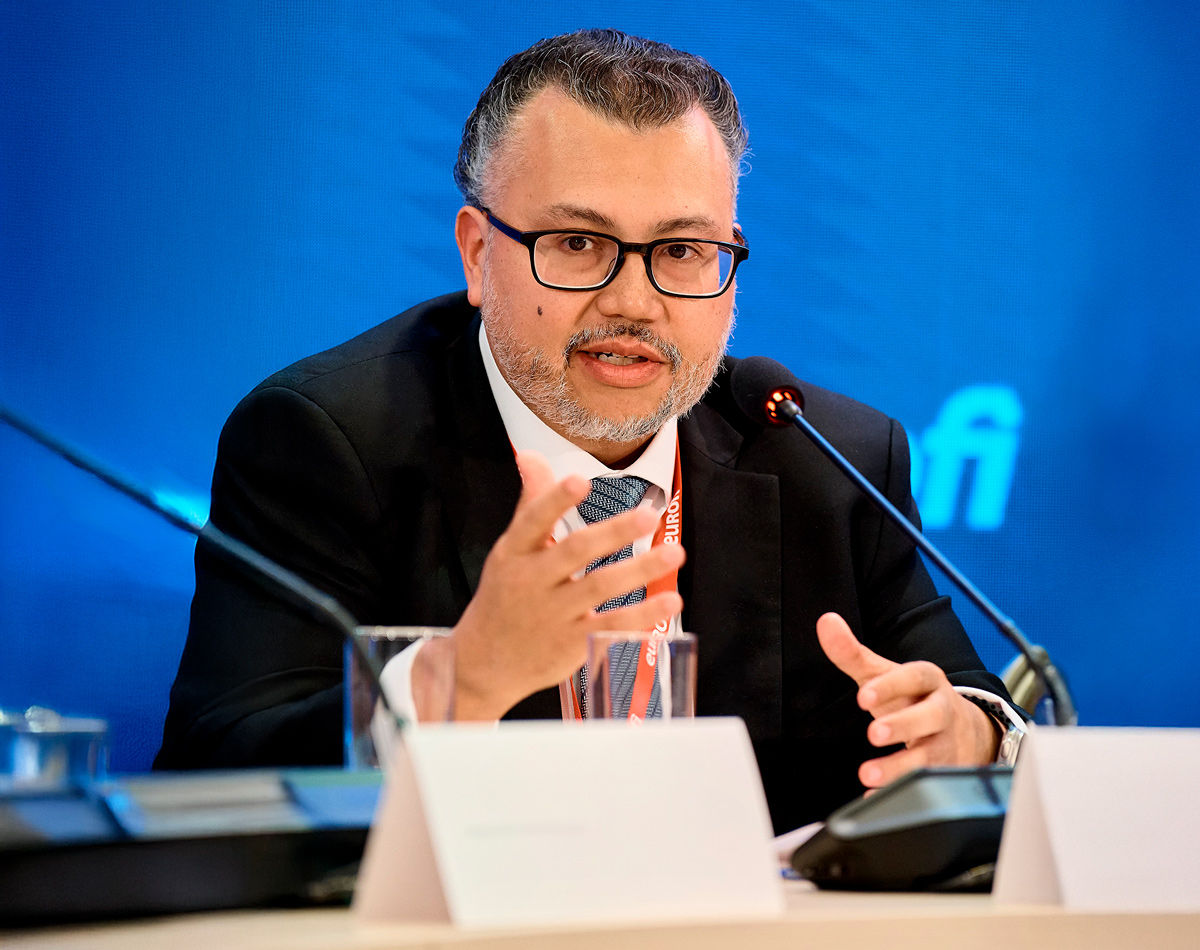The EU must recognize that it can support securitisation growth while maintaining financial stability," Christian Noyer, Honary Governor, Banque de France.1
The changes coming to Europe’s economic and political landscape are emerging at historically unprecedented speeds. With Germany’s fiscal expansion and U.S. tariff effects framing the backdrop, the latest Eurofi conference in Warsaw, Poland assumed particular gravitas considering the ongoing calls for deeper integration amidst the region’s evolving existential risks.
Europe’s Savings and Investment Union (SIU) and the role of a revived securitisation market comprise a focal point of this integration. We provided the European Commission (EC) with our recommendations for rebuilding the European securitisation market in late 2024, and our participation in the Eurofi conference presents an opportunity to provide an update on those efforts (please see Reviving European Securitisation: Translating Ambition into Reality for additional details).2
The State of Play
We came away from Eurofi feeling positive that most European policymakers are keen to address the issues that we raised in our submission to the EC. However, some nuances surfaced during the conference regarding the various ways policymakers are thinking about the most pertinent topics.
Prudential Capital Treatment
Easing capital requirements, especially for insurance investors under the Solvency II framework, is by far the most disputed policy proposal under consideration. Some regulators, particularly the insurance and pension regulator EIOPA, believe that securitised assets pose a mismatch for life insurance liabilities.3 These entities also express the belief that the asset class is too complex and that, as a result, life insurers lack the appropriate risk management expertise.
"Unlike simpler fixed-income products, securitisation requires specialised expertise, increasing management costs and perceived risks – especially for insurers lacking in-house expertise,” EIOPA’s chairperson recently wrote.4
However, the global securitised market consists of multiple asset classes with varying durations to the point where they comprise about 20% of U.S. insurance assets, according to the NAIC. Therefore, we continue to assert that European insurers’ under-allocations to securitised products is largely a function of the substantial capital reserves associated with these assets.
At this point, the majority of EU government officials appear to recognise that Europe is not facing a financial stability crisis, but is instead facing a growth crisis complicated by fiscal expansion, tariffs, and war. Most ministry of finance officials we engaged with were supportive of the EC’s work to introduce greater risk-sensitivity to capital requirements. The EC confirmed that it will revisit prudential capital under Solvency II and Basel as it prepares to release a draft of its revised regulations in June 2025 - presenting a historically accelerated timeframe considering the EC's initial comment period closed late last year. However, it remains to be seen how ambitious these proposals will be.
Due Diligence and Transparency
While equally important, the political push to rationalize very complex and detailed due diligence and transparency requirements under the EUSR is a less contentious issue. Most finance ministry officials and supervisors recognise that there is ample scope to reduce red tape. There is also growing recognition that asset managers are already required to carry out due diligence for all of the assets they intend to invest in under existing regulatory frameworks (e.g., UCITS for mutual funds or AIFMD for alternative funds).
"Policymakers should consider introducing a principles-based investor due diligence framework which would allow the end-investor to judge whether a given securitisation meets their needs,” wrote Edwin Wilches, CFA, Co-Head, Securitized Products, in Eurofi’s accompanying publication.5
Therefore, singling out securitisation for additional due diligence may be duplicative. Many policymakers we met with expressed support for taking a “principles-based” approach to regulating due diligence. Likewise, policymakers note that the detailed, loan-level reporting that issuers must comply with under the EUSR is too detailed and could be pared back.
Securitisation Platform
While reforming capital requirements, due diligence, and transparency represent policymakers' short-term priorities, there is also growing support for a medium-term policy proposal of creating a securitisation platform, which was first proposed by the French Ministry of Finance under the 2024 Noyer Report and was again referenced during the conference.
"This platform could benefit from a public guarantee on senior low-risk tranches, which would increase investor confidence and help mobilising private capital,” noted Christian Noyer, Honorary Governor, Banque de France, recently.6
While details remain limited, the broader thinking is to take inspiration from the U.S., Canada, and Japan to standardise issuance processes, thus reducing costs. French policymakers see an opportunity to scale up financing for SME loan securitisation and support green securitisation through such a platform. Member States disagree on whether there should be a public backstop similar to the U.S. model for Fannie Mae.
Where to From Here
As we look ahead, PGIM remains committed to assisting European policy makers to update regulations that will preserve financial stability while reducing unnecessary frictions targeted at securitisations. These updates should allow the securitisation market to play an important role in credit formation to support EU economic growth and GDP expansion across member states.
Indeed, Europe’s over-reliance on bank financing relative to the rest of the world has not only contributed to the region’s tepid growth, but it has also constrained Europe’s banking sector as its share of global market capitalisation has been halved in recent years (Figure 1). To that end, if Europe’s securitised market were revived to issuance levels that matched its pre-financial crisis levels, it is estimated to generate an additional €250-500 billion in private financing per year that would also reduce some of the constraints on European bank balance sheets.7
Figure 1
The Declining Global Market Capitalisation of Europe’s Banks (%)
Source: Eurofi Macroeconomic Scoreboard, April 2025, and PGIM Fixed Income. Share of market capitalisation is based on banks in the world.
As for next steps, EC officials are set to publish a revived regulatory proposal in June. These officials are carefully listening to the ongoing policy debate knowing their proposals must be assessed, discussed, and amended by both the Council (EU Member State governments) and the European Parliament before a final compromise becomes law. The revised EUSR will be one of the first, large legislative packages to come out under the EU’s 2024-2029 strategic agenda and among the first actions under the new Savings and Investment Union (SIU) initiative aimed to boost financial opportunities for EU citizens and businesses.
The Commission will want to show that it is taking its competitiveness and growth mandate seriously and to prove that it is serious about making EU laws less detailed and onerous. At the same time, the Commission will want to propose a package that does not get bogged down by months or years of delay from political negotiations with those Members of the European Parliament (MEPs) that may be more sceptical of the benefits of securitisation. As of now, we remain cautiously optimistic that that the European Commission will produce an ambitious proposal with economic growth in mind.
1 The Eurofi Views Magazine, April 2025, page 235.
2 PGIM held more than 20 meetings with approximately 40 policymakers during the Eurofi conference. In addition, please see “Reviving European Securitisation—Time for Take Off,” by Edwin Wilches, CFA, Co-Head of Securitized Products, on page 241 of the Eurofi Views Magazine. https://www.eurofi.net/wp-content/uploads/2025/03/eurofi-views-warsaw-2…
3 EIOPA refers to European Insurance and Occupational Pensions Authority.
4 The Eurofi Views Magazine, April 2025, page 236.
5 Op. Cit., Wilches, pg. 241.
6 Op. Cit., Noyer, pg. 235.
7 Op. Cit., pg. 64.
The comments, opinions, and estimates contained herein are based on and/or derived from publicly available information from sources that PGIM Fixed Income believes to be reliable. We do not guarantee the accuracy of such sources or information. This outlook, which is for informational purposes only, sets forth our views as of this date. The underlying assumptions and our views are subject to change. Past performance is not a guarantee or a reliable indicator of future results.
Source(s) of data (unless otherwise noted): PGIM Fixed Income, as of April 2025.
For Professional Investors only. Past performance is not a guarantee or a reliable indicator of future results and an investment could lose value. All investments involve risk, including the possible loss of capital.
PGIM Fixed Income operates primarily through PGIM, Inc., a registered investment adviser under the U.S. Investment Advisers Act of 1940, as amended, and a Prudential Financial, Inc. (“PFI”) company. Registration as a registered investment adviser does not imply a certain level or skill or training. PGIM Fixed Income is headquartered in Newark, New Jersey and also includes the following businesses globally: (i) the public fixed income unit within PGIM Limited, located in London; (ii) PGIM Netherlands B.V., located in Amsterdam; (iii) PGIM Japan Co., Ltd. (“PGIM Japan”), located in Tokyo; (iv) the public fixed income unit within PGIM (Hong Kong) Ltd. located in Hong Kong; and (v) the public fixed income unit within PGIM (Singapore) Pte. Ltd., located in Singapore (“PGIM Singapore”). PFI of the United States is not affiliated in any manner with Prudential plc, incorporated in the United Kingdom or with Prudential Assurance Company, a subsidiary of M&G plc, incorporated in the United Kingdom. Prudential, PGIM, their respective logos, and the Rock symbol are service marks of PFI and its related entities, registered in many jurisdictions worldwide.
These materials are for informational or educational purposes only. The information is not intended as investment advice and is not a recommendation about managing or investing assets. In providing these materials, PGIM is not acting as your fiduciary. PGIM Fixed Income as a general matter provides services to qualified institutions, financial intermediaries and institutional investors. Investors seeking information regarding their particular investment needs should contact their own financial professional.
These materials represent the views and opinions of the author(s) regarding the economic conditions, asset classes, securities, issuers or financial instruments referenced herein. Distribution of this information to any person other than the person to whom it was originally delivered and to such person’s advisers is unauthorized, and any reproduction of these materials, in whole or in part, or the divulgence of any of the contents hereof, without prior consent of PGIM Fixed Income is prohibited. Certain information contained herein has been obtained from sources that PGIM Fixed Income believes to be reliable as of the date presented; however, PGIM Fixed Income cannot guarantee the accuracy of such information, assure its completeness, or warrant such information will not be changed. The information contained herein is current as of the date of issuance (or such earlier date as referenced herein) and is subject to change without notice. PGIM Fixed Income has no obligation to update any or all of such information; nor do we make any express or implied warranties or representations as to the completeness or accuracy.
Any forecasts, estimates and certain information contained herein are based upon proprietary research and should not be interpreted as investment advice, as an offer or solicitation, nor as the purchase or sale of any financial instrument. Forecasts and estimates have certain inherent limitations, and unlike an actual performance record, do not reflect actual trading, liquidity constraints, fee. These materials are not intended as an offer or solicitation with respect to the purchase or sale of any security or other financial instrument or any investment management services and should not be used as the basis for any investment decision. PGIM Fixed Income and its affiliates may make investment decisions that are inconsistent with the recommendations or views expressed herein, including for proprietary accounts of PGIM Fixed Income or its affiliates.
Investing in the bond market is subject to risks, including market, interest rate, issuer, credit, inflation risk, and liquidity risk. The value of most bonds and bond strategies are impacted by changes in interest rates. Bonds and bond strategies with longer durations tend to be more sensitive and volatile than those with shorter durations; bond prices generally fall as interest rates rise, and low-interest rate environments increase this risk. Reductions in bond counterparty capacity may contribute to decreased market liquidity and increased price volatility. Bond investments may be worth more or less than the original cost when redeemed. Mortgage- and asset-backed securities may be sensitive to changes in interest rates, subject to early repayment risk, and while generally supported by a government, government agency or private guarantor, there is no assurance that the guarantor will meet its obligations. High yield, lower-rated securities involve greater risk than higher-rated securities; portfolios that invest in them may be subject to greater levels of credit and liquidity risk than portfolios that do not. Investing in foreign-denominated and/or -domiciled securities may involve heightened risk due to currency fluctuations, and economic and political risks, which may be enhanced in emerging markets. Currency rates may fluctuate significantly over short periods of time and may reduce the returns of a portfolio. Commodities contain heightened risk, including market, political, regulatory and natural conditions, and may not be suitable for all investors. Diversification does not ensure against loss.
In the United Kingdom, information is issued by PGIM Limited with registered office: Grand Buildings, 1-3 Strand, Trafalgar Square, London, WC2N 5HR.PGIM Limited is authorised and regulated by the Financial Conduct Authority (“FCA”) of the United Kingdom (Firm Reference Number 193418). In the European Economic Area (“EEA”), information is issued by PGIM Netherlands B.V., an entity authorised by the Autoriteit Financiële Markten (“AFM”) in the Netherlands and operating on the basis of a European passport. In certain EEA countries, information is, where permitted, presented by PGIM Limited in reliance of provisions, exemptions or licenses available to PGIM Limited including those available under temporary permission arrangements following the exit of the United Kingdom from the European Union. These materials are issued by PGIM Limited and/or PGIM Netherlands B.V. to persons who are professional clients as defined under the rules of the FCA and/or to persons who are professional clients as defined in the relevant local implementation of Directive 2014/65/EU (MiFID II). In Switzerland, information is issued by PGIM Limited, London, through its Representative Office in Zurich with registered office: Kappelergasse 14, CH-8001 Zurich, Switzerland. PGIM Limited, London, Representative Office in Zurich is authorised and regulated by the Swiss Financial Market Supervisory Authority FINMA and these materials are issued to persons who are professional or institutional clients within the meaning of Art.4 para 3 and 4 FinSA in Switzerland. In certain countries in Asia-Pacific, information is presented by PGIM (Singapore) Pte. Ltd., a regulated entity with the Monetary Authority of Singapore under a Capital Markets Services License to conduct fund management and an exempt financial adviser. In Japan, information is presented by PGIM Japan Co. Ltd., registered investment adviser with the Japanese Financial Services Agency. In South Korea, information is presented by PGIM, Inc., which is licensed to provide discretionary investment management services directly to South Korean investors. In Hong Kong, information is provided by PGIM (Hong Kong) Limited, a regulated entity with the Securities & Futures Commission in Hong Kong to professional investors as defined in Section 1 of Part 1 of Schedule 1 of the Securities and Futures Ordinance (Cap.571). In Australia, this information is presented by PGIM (Australia) Pty Ltd (“PGIM Australia”) for the general information of its “wholesale” customers (as defined in the Corporations Act 2001). PGIM Australia is a representative of PGIM Limited, which is exempt from the requirement to hold an Australian Financial Services License under the Australian Corporations Act 2001 in respect of financial services. PGIM Limited is exempt by virtue of its regulation by the FCA (Reg: 193418) under the laws of the United Kingdom and the application of ASIC Class Order 03/1099. The laws of the United Kingdom differ from Australian laws. In Canada, pursuant to the international adviser registration exemption in National Instrument 31-103, PGIM, Inc. is informing you that: (1) PGIM, Inc. is not registered in Canada and is advising you in reliance upon an exemption from the adviser registration requirement under National Instrument 31-103; (2) PGIM, Inc.’s jurisdiction of residence is New Jersey, U.S.A.; (3) there may be difficulty enforcing legal rights against PGIM, Inc. because it is resident outside of Canada and all or substantially all of its assets may be situated outside of Canada; and (4) the name and address of the agent for service of process of PGIM, Inc. in the applicable Provinces of Canada are as follows: in Québec: Borden Ladner Gervais LLP, 1000 de La Gauchetière Street West, Suite 900 Montréal, QC H3B 5H4; in British Columbia: Borden Ladner Gervais LLP, 1200 Waterfront Centre, 200 Burrard Street, Vancouver, BC V7X 1T2; in Ontario: Borden Ladner Gervais LLP, 22 Adelaide Street West, Suite 3400, Toronto, ON M5H 4E3; in Nova Scotia: Cox & Palmer, Q.C., 1100 Purdy’s Wharf Tower One, 1959 Upper Water Street, P.O. Box 2380 -Stn Central RPO, Halifax, NS B3J 3E5; in Alberta: Borden Ladner Gervais LLP, 530 Third Avenue S.W., Calgary, AB T2P R3.
© 2025 PFI and its related entities.
2025-3643
Collapse Section



